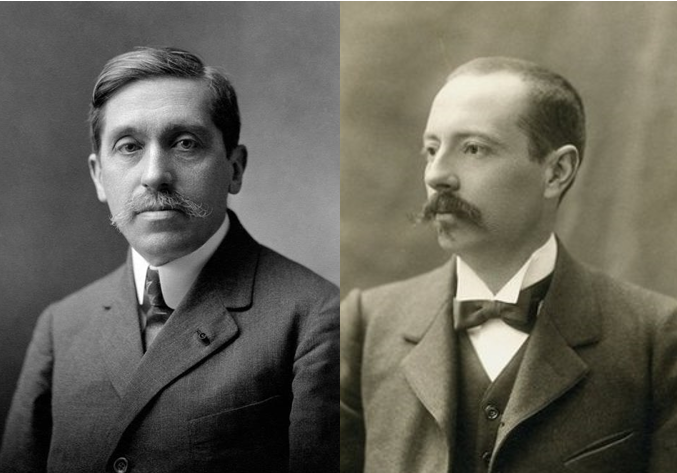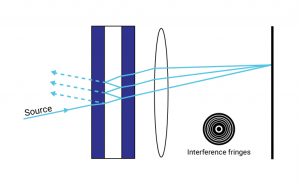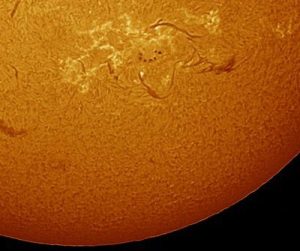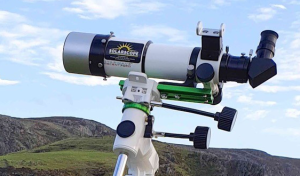
Etalons are widely deployed in industry and research. With contemporary applications of etalons or of the devices they are incorporated into, Fabry-Perot interferometers are found in applications as diverse as astronomy, telecommunications, optical fabrication and spectroscopy. It is therefore easy to overlook their origin. So perhaps in this, the 125th anniversary year of their invention, we should honour the work of the physicists who gave their name to these devices.
Why Charles Fabry and Alfred Perot are not more widely celebrated beyond having a component named after them is uncertain. Perhaps they lacked the flamboyance or eccentricity of Newton or Einstein, Oppenheimer or Hawking. Spectral analysis of light was, at the end of the nineteenth century, understood to be fundamental to unlocking the mysteries of atomic physics. However instruments used for the purpose were frustratingly inaccurate. Step in then, our heroes, Fabry and Perot, who in two papers published in 1897 and 1899 described a technique now fundamental to modern laser physics and associated applications.
In their 1897 paper ‘Sur le fringes des lames maces argentées et leur application a la mesure de petites épaisseurs d’air’, or ‘On the fringes of silver mace blades and their application to the measurement of small thicknesses of air’, the authors laid down the basis for using interferometry to accurately measure small distances between parallel metal plates.
This was followed in 1899 by ‘Théorie et applications d’une nouvelle méthode de spectroscopie interférentielle’, or ‘Theory and applications of a new method of interferential spectroscopy’ which explored the application of interference to spectroscopy. It also gave details of the experimental setup used. And it’s this setup which has been developed and adopted worldwide in countless applications. We can thank Fabry for theory and Perot for the engineering development.
Etalon derives from ‘étalon’, meaning ‘measuring gauge’ or ‘standard’ in French. The component consists of two very parallel, partially reflecting surfaces. The distance between the two surfaces, or in reality partially reflecting mirrors, is both defined and stable, such that only light in resonance can pass through space between them, thereby allowing the selection of specific wavelengths.
When an etalon is illuminated by a diffuse light source the light enters the space between the two reflecting surfaces (the ‘cavity’) and is repeatedly reflected back and forth between these two surfaces, producing multiple transmitted rays, but only allowing wavelengths to transmit for which the cavity is in resonance, i.e. where constructive interference takes place.

An etalon is an excellent wavelength selector. In their 1899 paper, Fabry and Perot published analysis of the fine structure of a number of spectral lines, generated from metal vapour including the lines of mercury, cadmium and thallium. Accurate analysis of atomic fine structures was made possible by the etalon they had invented and formed part of a wave of work on the structure of the atom in the late nineteenth and early twentieth centuries. Notably, the early 1900s saw the emergence of various models of the atom and Planck’s discovery of the quantum.
125 years later etalons and Fabry-Perot interferometers remain highly relevant, and not only in the laboratory. Without etalons we would not have telecommunication networks based on wavelength division multiplexing allowing high capacity, bi-directional communication through a single glass fibre, the basis of modern, fibre-based telecommunication.

Etalons used in semiconductor manufacturing processed narrow and stabilise the linewidth of the laser when inscribing small structures found on semiconductors.
When looking to ascertain the wavelength of an unknown light source, the scientist generally employs a spectrum analyser, another device dependent on etalons.
In gravitational wave research etalons are used for light storage – the photons bounce back and forth between ultra-low loss etalon plates for up to a millisecond to increase the interaction time with a passing gravitational wave.
The coating designs of optical interference filters used in astronomy, light sources, cameras and lasers are also based on Fabry and Perot’s work. Solar viewing instruments for the hydrogen alpha line, for example, contain both interference filters and etalons.


When it comes to atmospheric research this is also where somewhat the circle closes as in 1913 Charles Fabry and Henri Buisson discovered the Earth’s ozone layer. When analysing the solar spectrum reaching the Earth, Fabry and Buisson discovered that it matched the black body radiation in the range of 5500-6000K, but that all radiation below 310nm was somehow missing from the spectrum. They thereby correctly assumed that it must be absorbed in the atmosphere. The spectrum of the ‘missing radiation’ matched that of ozone, leading thereby to the discovery of the ozone layer with the help of spectroscopy and, ultimately, the etalon.
Etalons play several critical roles in laser systems
Mode selection
Selection of cavity length and reflectivity allows an etalon to be used as a mode selector by allowing only the desired wavelength (or a narrow range of wavelengths) to pass through while suppressing others. In this way coherent and stable output is ensured.
Thermal and mechanical stability
As Fabry and Perot intended when they named the component ‘étalon’, or standard, etalons today provide a stable reference for laser wavelengths. They often incorporate materials with low thermal expansion coefficients to minimise wavelength drift due to temperature changes. The mechanical stability of the etalon ensures consistent cavity length, further stabilising the wavelength.
Linewidth reduction
An etalon’s cavity length can be set to a value such that only a very narrow range of wavelengths are permitted to constructively interfere. In this way the output laser linewidth is reduced, enhancing the coherence and spectral purity of the laser.
Frequency Tuning
Some Fabry-Perot interferometers are tuneable. Mechanical or thermal adjustment allows precise tuning of the laser wavelength within a specific range and gives the system user agile wavelength control.
We have a lot to thank Charles Fabry and Alfred Perot for. So much of what we take for granted in modern laser physics and the myriad of applications it serves, just wouldn’t be possible without the humble etalon.
If you have any queries about etalons or their application, please get in touch.
Further Reading
- Insight Article: The Critical Role of VIPAs in Unlocking the Potential of Brillouin Microscopy in Biomedical Applications
- Technical note: Etalons Explained
- Product page: Etalons

